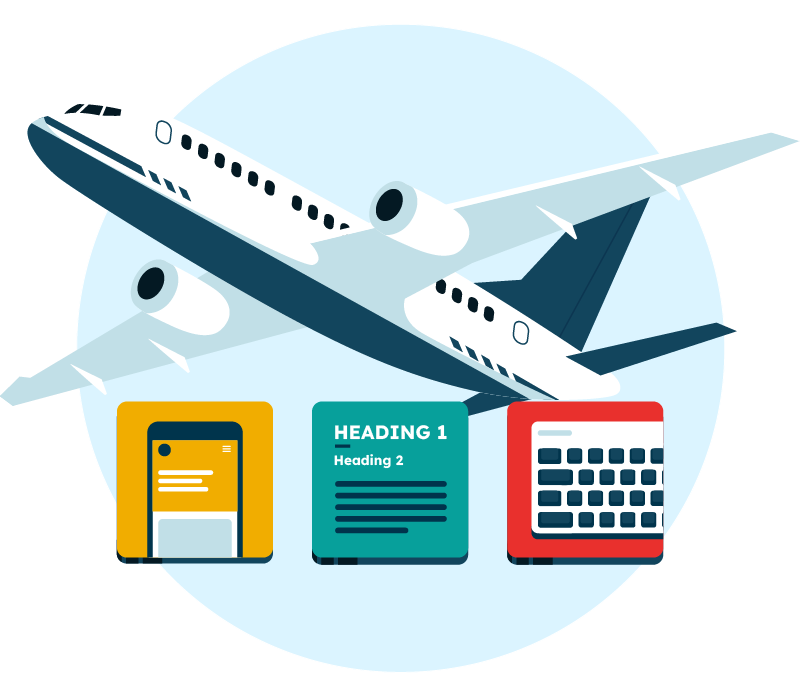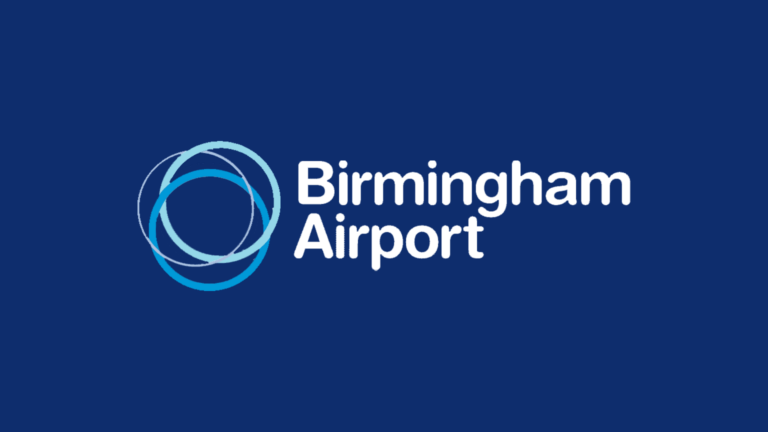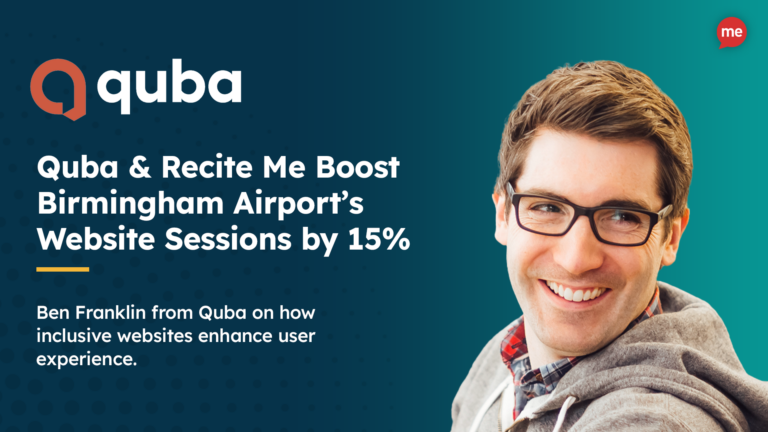A recent Airline Digital Accessibility Report conducted by Hassel Inclusion and the UK Civil Aviation Authority (CAA) identified that many airlines aren’t doing enough to make their online content and services equally available to all passengers.
Lots of people need digital accessibility adjustments. Whether it’s a temporary need due to an accident or injury, a long-term requirement caused by a lifelong condition, or simply a byproduct of the natural aging process, many Brits struggle to access information on the internet the same way as others.
Research shows that one in every five people in the UK has a disability that can make accessing online content challenging. However, the Hassel/CAA report identified that in our ageing population, 20% have a progressive impairment, meaning as many as 4 out of 10 people may need additional digital accessibility solutions.
What is an Accessible Website?
An accessible website is one that is designed and developed to ensure that everyone can perceive, navigate, understand, and interact with its content and features, providing an inclusive user experience for all users, regardless of ability or disability.
There are many layers of website accessibility to work through. However, to be considered accessible, a website must meet the following basic criteria:
- Employ the correct structure, layout, and features to account for the diverse needs of individuals with various access requirements.
- Comply with the World Content Accessibility Guidelines (WCAG) 2.1 Level AA.
- Meet the relevant local and national legal standards and regulations.
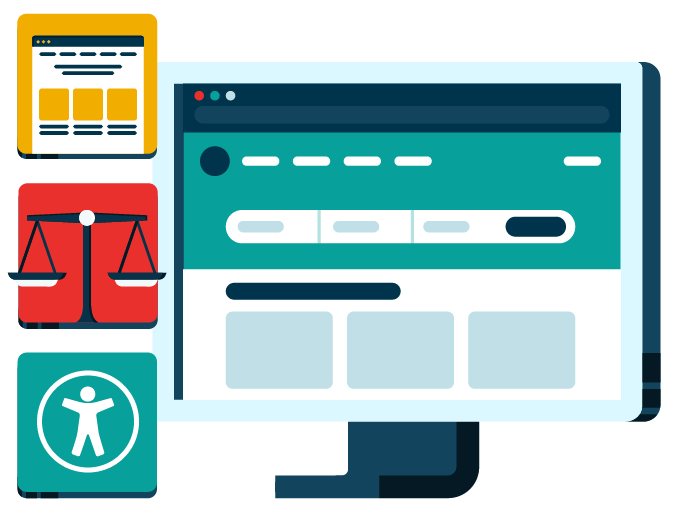
Why is an Accessible Airline Website Important?
Everyone should have the same opportunities to travel. Yet the needs of disabled passengers are often neglected.
In an era where the aviation industry is embracing automation and artificial intelligence for many processes, proactive steps must be taken to ensure every customer touchpoint is accessible – including airline websites.
An accessible airline website is crucial for several reasons. Not only does it ensure compliance with legal regulations. It also fosters inclusivity, enhances user experiences, and can even lead to increased revenue. Here is a comprehensive list of considerations:
The Legal Aspect
The Equality Act sets clear stipulations requiring companies to make adjustments for disabled users and those with additional access needs.
Equal Access
Everyone should have access to the same information and services.
Inclusivity
Airlines serve a diverse customer base. Failing to provide accessibility solutions can alienate potential customers.
Faster Booking
A well-designed website streamlines the booking process, making it faster and more convenient.
Enhanced User Experience
Clear and organised content benefits everyone, not just those with disabilities.
Retention and Loyalty
Airlines that prioritise accessibility build a positive reputation, recommendations and loyal customers.
Who Needs Help Accessing Airline Websites?
In short, everyone. Of course, those with disabilities may require additional adjustments. But even people without a disability benefit from enhanced website accessibility features. So, it’s not just about enabling access for what you may (incorrectly) assume to be a small minority. It’s about making improvements that benefit every single website visitor.

“It’s not just about disabled users being able to access your website — it’s about everyone being able to access your website.”
Trenton Moss, Webcredible
Additionally, when considering accessibility requirements, it’s essential to remember that not all disabilities are physical. In fact, as many as 80% of all disabilities are hidden, accounting for a multitude of conditions such as:
- Vision impairments like blindness, partial blindness, blurred vision, deaf blindness, and colour blindness.
- Neurodivergent traits like dyslexia, dyspraxia, hyperlexia, and dysgraphia.
- Attention disorders like attention deficit hyperactivity disorder (ADHD).
- Language and literacy problems.
- Learning disabilities.
- Hearing loss.
What Online Access Barriers Do Customers Face?
Online access barriers occur whenever an element of a website’s design or presentation makes it difficult to read or interact with the content. A few examples include:
Text – Fonts that are too small or difficult to read make comprehension a struggle. On airline websites, this is a particular issue on page elements like flight calendars and price comparison tables.
Colours – Insufficient colour contrast between text and background can make your web copy and flight availability calendars impossible for some website visitors to read and understand.
Navigation – Cluttered web pages that don’t flow in a logical order are complex to navigate, making it impossible for those using screen readers to purchase tickets or make a reservation without assistance.
Language – Web copy littered with overly complex language and technical terminology makes your content difficult to process for those with literacy issues and travellers who speak and read English as a second language.
Images – When images on your website are missing descriptive alt tags, passengers with impaired vision miss out on receiving additional details and contextual information.
Videos – Deaf passengers cannot follow your airline’s promotional, instructional, or ‘how to’ videos when they’re not presented with closed captions.
Forms – Many booking forms on airline websites feature empty links or missing input labels, making it unclear where to click to get started. Plus, downloadable PDF forms often have insufficient markup.
Accessibility Barrier Examples
Let’s take a look at some real-world examples of accessibility issues that your airline’s website visitors could face.
Emily has dyslexia and relies on screen-reading software. She visits your website to check flight schedules and fares but finds the text lacks semantic structure and the layout has no consistency from page to page. This makes it challenging for her screen reader to convey the information accurately. Ultimately, she clicks away to a competitor’s website with better text formatting and accessibility features.
Sarah is deaf, she’s planning a trip with her family using your airline’s website. However, there are no closed captions for important travel videos, making it difficult for her to understand crucial information about destinations, amenities, and safety procedures. Frustrated, she Googles the information she needs filtering by video, and is presented with more accessible media that links directly to another airline’s booking page.

Jake has ADHD and struggles with complex navigation. He’s looking for information about your baggage policies and fees. Unfortunately, the details he needs are scattered across multiple pages with inconsistent headings and unclear organisation. He quickly becomes overwhelmed and abandons your site in favour of an airline that presents information in a more straightforward and organised way.
Where Airline Websites are Falling Short
The Hassel/CAA report identified the following key areas where airline websites are currently falling short:
- Insufficient keyboard navigation compatibility.
- Inaccurately labelled buttons and links.
- Lack of awareness of the range of consumer assistive technologies in use.
- Overly complex website components without adequate instructions or guidance on how to use them.
- Unclear processes for customer contact mechanisms.
- Failure to review the accessibility of third-party content.
- Failure to adequately consider the end-to-end consumer journey.
4 Ways to Improve Your Airline Website’s Accessibility Score
To maximise inclusion, bookings, customer satisfaction, and profits, your website must be accessible to everyone. Follow these steps to get started.
1. Get up to Speed with Accessibility Guidelines
In addition to ensuring your website complies with the requirements of the Equality Act, you should familiarise yourself with the Web Content Accessibility Guidelines (WCAG). WCAG provides an internationally recognised framework for anyone involved in building and maintaining a website. Version 2.1 Level AA is typically the minimum reference point when discussing ‘making a website accessible.’
2. Audit and Update Your Website
Handy tools like the Recite Me Accessibility Checker provide an at-a-glance overview of where your content falls short of WCAG 2.1 and what improvements are needed. General best practices for enhanced accessibility include:
- Using a content management system that supports accessibility.
- Ensuring your site is mobile-friendly
- Applying headings correctly to structure written content.
- Utilising a logical and consistent layout
- Ensuring PDF booking forms are designed for accessibility.
- Optimising for keyboard navigation.
- Using a dyslexia-friendly font.
- Including alt text for all images and icons.
- Being mindful of colour use and colour contrasts.
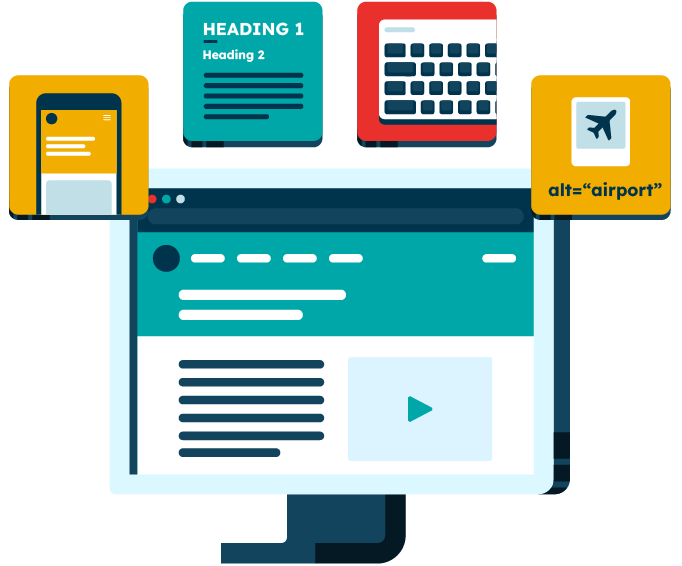
3. Practice Inclusive Marketing and Communication
To maximise conversions from browsing to booking, you should provide customers with clear direction and make all of your online content and communications as inclusive as possible. Best practices include:
- Displaying an accessibility statement on your website. The Hassel/CAA report specifically identified that airline websites lack transparency and disclosure, with many carriers having either a missing or inaccurate accessibility statement.
- Ensuring your social media accounts also adhere to accessibility best practices.
- Utilising a variety of communication channels to cater to individual preferences.
4. Gather Customer Feedback – And Act on It!
Your website doesn’t magically become inclusive just because you made it accessible. In fact, it’s all too easy to create a technically accessible website that’s still incredibly difficult for people to use. For example, in the Airline Digital Accessibility Report, Virgin Atlantic scored 8 out of 10 based on WCAG criteria but only 1 out of 10 based on the consumer journey ranking system. Therefore, engaging with consumers directly to gain feedback on their end-to-end journey and making ongoing changes and improvements is essential.
Get Started Today!
The Recite Me team is here to support your efforts to provide an inclusive and compliant website. We save you time and money by highlighting what needs to be fixed first for the most effective results and significant return on investment.
Don’t delay. Act today! Run a free scan of your website for WCAG 2.1 AA compliance, or contact our team for more advice about WCAG standards and the web accessibility legislation that applies to your airline.
